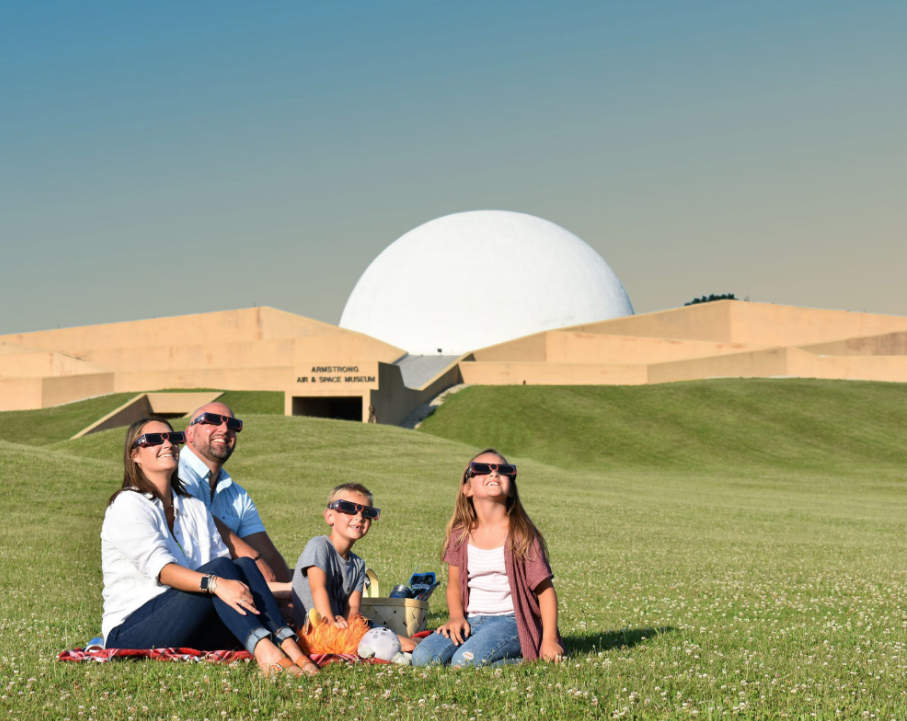Henry Ford College Students Host Solar Eclipse Events
Gallery

Family viewing total solar eclipse at Armstrong Air and Space Museum in Wapakoneta, Ohio, April 8, 2024. Photo courtesy The Ohio History Connection
On April 8, a total solar eclipse, when the moon passes between the sun and Earth, casts its shadow. This year’s eclipse had 99% visibility and lasted twice as long as the solar eclipse in 2017.
Henry Ford College astronomy students Anthony Preston and Courtney Rinehart hosted solar eclipse information events at locations around the metro Detroit area to try and increase the number of people ready to view the eclipse safely. “We anticipated the knowledge level of patrons to vary, so we wanted to avoid complex topics that younger attendees wouldn’t understand and extremely basic topics that older attendees would have heard a million times. The shorter format allowed us to get people who just wanted glasses in and out in a timely manner while still allowing people who wanted more information to ask us as many questions as they could think of,” Preston explained.
At the drop-in events, a pair of solar eclipse glasses was provided, a pinhole viewer, a handout with safety information on one side, and the eclipse's path plus estimated totality times in different cities on the other side. At each event, multiple information stations provided varying stories of the moon from various countries and cultures, including a booklet about clouds. A scale model displayed the distance between the Earth and moon if they were shrunk down with a meter stick.
Preston said, “We hoped that a lot of people would show, but we didn’t really know for sure. We hoped that we would get 200 attendees across all three of the events, but we ended up handing out almost 500 pairs of glasses. We did have a sign-in sheet, but there were people who took more pairs of glasses and some who didn’t sign in at all. All-in-all, we were very pleased with the turnout of every event.”
The states that had the best visibility to see the solar eclipse were Texas, Oklahoma, Arkansas, Missouri, Illinois, Indiana, Ohio, and Pennsylvania. Many Michigan residents traveled to Ohio. “My husband and I were right in the middle of it, and we just drove 10 minutes down the street to a friend’s and had a solar eclipse party,” an Ohio resident told me.
This year’s eclipse was unique because of its scale, rarity, and the possibility of seeing the sun's corona during totality, allowing many people to watch the eclipse from their backyard.
People were advised to use solar eclipse glasses and look directly at the sun. Solar eclipse glasses shield your eyes from harmful solar radiation. It is possible to suffer irreversible blindness or partial vision loss from looking directly at the sun during an eclipse. Doctors refer to the damage to the retina caused by eclipses as solar retinopathy or eclipse blindness. A safe way to view the eclipse is best done with ISO-certified (ISO 12312-2:2015) safe eclipse glasses and to leave them on until the eclipse is over.
The next total solar eclipse will be in 2033 and can be seen in Michigan . Preston said, “The path of totality will cross 15 states, including small parts of Michigan. Luna Pier in Monroe County is the only city in Michigan that will experience 100 percent darkness, as it falls on the edge of the line of totality. The total solar eclipse in this city will only last 19 seconds.”
